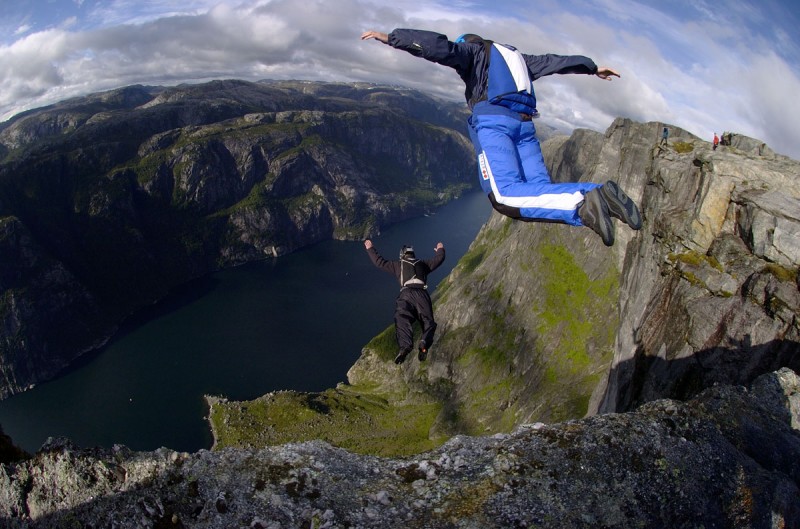
BASE jumping was started in 1978 by a group that jumped off El Capitan using skydiving equipment.
BASE jumping, which encompasses jumping with a parachute off a fixed object such as buildings, antennas, spans (bridges), and earth (cliffs), has taken over skydiving’s place at the top of the extreme sports totem pole. Thrill-seekers are flocking to this adrenaline rush-inducing activity, which was first named filmmaker Carl Boenish, his wife Jean Boenish, Phil Smith, and Phil Mayfield in 1978 when Carl filmed the first BASE jump at El Capitan in Yosemite National Park.
There were several failed attempts at early forms of BASE jumping that led to injuries or deaths prior to the first official BASE jump, but these were because of improper equipment and not enough preparation.
With spreading popularity beginning in the early 1980s, BASE jumps were carried out with traditional skydiving equipment such as two parachutes and deployment components, among other supplies.
While there are some dedicated locations, it is illegal to BASE jump in most places and people can be charged with trespassing along with breaking and entering, reckless endangerment, or vandalism. It is not just the jumper who is at risk of legal implications, as anyone accompanying them could also face charges.
There are not many man-made objects that are open for BASE jumping because of the ramifications if someone were to be injured. More importantly, pedestrians can be injured if they are either near the landing spot of the BASE jumper or if the jumper gets off course because of wind or ill-planning. Even in the first jump off El Capitan, the National Park Service vocalized numerous times that it was against the sport and did not want to be held liable. Because many jumpers choose to go around the law, they are often not prepared for the conditions they will face during the jump.
Other locations, such as the Perrine Bridge in Twin Falls, Idaho, allow for BASE jumping without a permit.
After completing jumps in each of the four categories, jumpers are given the opportunity to apply for a BASE number, the first few of which were given to the founders of the sport. Number 1,000 was awarded in 2005 and there are currently more than 1,400 issued BASE numbers. Because of the difficulty that goes along with jumping off a building, such as security or lack of a landing space in more crowded cities, many BASE jumpers have not yet received their number.
The combined fatality and injury rate of BASE jumping is approximately 43 times higher than jumping from a plane, adding to the characterization of this as an extreme sport.
The Twin Falls Times-News reported Monday that accidents are rising, but that rescuers are not highly concerned as of yet. There have been five BASE jumping-related accidents so far this year compared to about one to two each year over the past several years.
“Bottom line is, we don’t feel that it’s troublesome or impacting our community as far as the rescues,” said Lori Stewart, spokeswoman for the Twin Falls County Sheriff’s Office.
Image from Xof711 on the Wikimedia Commons
 Your Privacy Choices
Your Privacy Choices
 The
The